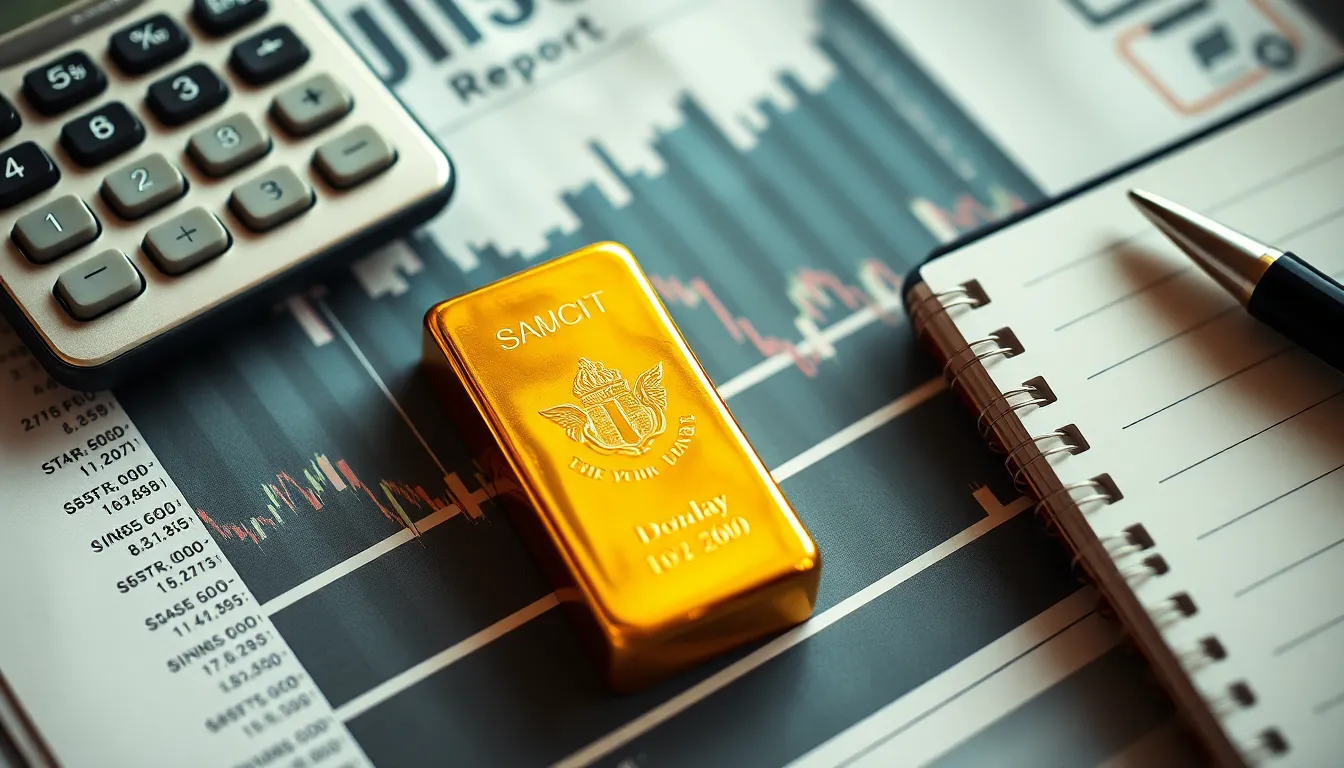Gold has long been the shining star of investments, but with prices fluctuating like a toddler on a sugar high, keeping track of the cost of gold per gram can feel like trying to catch smoke with your bare hands. Whether you’re a seasoned investor or just curious about the latest bling, understanding gold’s value is key to making smart financial moves.
Table of Contents
ToggleCurrent Cost of Gold Per Gram
As of October 2023, the average cost of gold per gram fluctuates around $60. Price variations occur based on market demand and global economic factors. Recent trends indicate an upward movement in gold prices due to increasing geopolitical tensions and rising inflation rates.
Gold price today can significantly differ from yesterday’s figures. Active trading on exchanges drives these changes, reflecting investor sentiment. Spot prices, which denote current market value, remain crucial for both buyers and sellers.
Market reports show that recent fluctuations reach highs of $62 and lows of $58 per gram within a week’s timeframe. Keeping track of these numbers helps in making timely decisions for purchases or investments. Notably, gold jewelry is often priced higher due to craftsmanship and design costs.
Industry experts frequently recommend monitoring reputable financial news sources for real-time updates. Accurate, up-to-date information contributes to better understanding price movements. Infractions in supply chains or increased mining costs could also influence the gold market.
Investors eyeing gold as a long-term asset find value in its historical stability. Current prices reflect both intrinsic and speculative market factors. A clear grasp of these elements aids in predicting future trends and making informed decisions.
Historical Trends in Gold Prices

Understanding historical trends in gold prices aids in grasping market fluctuations and making informed decisions. Tracking how gold prices shifted over time highlights their volatility and inherent stability.
Price Fluctuations Over the Decades
Gold prices have shown significant fluctuations over the decades. In the 1980s, prices averaged around $400 per ounce. A sharp increase occurred during the early 2000s, with prices reaching approximately $1,000 per ounce by 2008. Since then, steady rises pushed prices to about $1,900 per ounce in 2020, driven by economic uncertainty. As of October 2023, the current average cost of gold per gram rests around $60, reflecting recent upward trends due to geopolitical tensions and inflation. Analyzing these trends reveals a pattern of strong performance during crises.
Key Events Impacting Gold Prices
Several key events have significantly impacted gold prices throughout history. The 2008 financial crisis saw a surge in demand for gold as a safe haven, causing prices to soar. Central banks also influence gold by adjusting interest rates and holding vast reserves. The COVID-19 pandemic triggered heightened investor interest, pushing prices higher. Geopolitical tensions contribute to fluctuations as uncertainty drives demand. Similarly, rising inflation rates can instigate price increases, further demonstrating gold’s role as a hedge against economic instability. Each event shapes market dynamics and influences current pricing strategies.
Factors Influencing Gold Costs
Various elements affect gold prices, making them fluctuate over short periods. Understanding these factors helps investors make better decisions.
Supply and Demand Dynamics
Supply and demand strongly influence gold pricing. Increasing demand from industries like electronics and jewelry drives prices upward. Mining production rates impact supply; lower output often leads to higher prices. Geopolitical tensions also boost demand, as investors seek safe assets. Market conditions can shift quickly; thus, staying informed is crucial.
Economic Indicators
Economic indicators play a significant role in gold pricing. Inflation rates are particularly influential; higher inflation typically increases gold’s value as a hedge. Interest rates affect gold as well; lower rates decrease opportunity costs for holding gold. Furthermore, central bank policies can dictate investor sentiment, impacting demand. Observing these indicators aids in predicting price movements effectively.
Global Markets and Their Impact
Gold prices are significantly influenced by global market dynamics. Various factors contribute to the fluctuations, including production levels and currency movements.
Major Gold-Producing Countries
China, Australia, and Russia lead the world in gold production. China produced approximately 380 metric tons in 2022, making it the largest global producer. Australia followed closely with around 320 metric tons, and Russia contributed about 300 metric tons. The output from these countries affects the overall supply and demand for gold. Lower production rates in any of these regions can lead to upward price pressure. Additionally, political stability in these nations plays a vital role in maintaining steady production levels.
Currency Fluctuations
Currency fluctuations have a direct impact on gold prices. A stronger U.S. dollar often makes gold more expensive for foreign buyers, leading to reduced demand. Conversely, a weaker dollar typically enhances gold’s attractiveness, driving prices up. Currency stability or volatility in major economies also influences investor behavior. When investors expect currency depreciation, they often turn to gold as a hedge. This dynamic between currency and gold forms a crucial aspect of market analysis.
Tracking the cost of gold per gram is vital for anyone interested in its market dynamics. As prices fluctuate due to various factors like geopolitical tensions and inflation, staying informed can significantly impact investment decisions. The historical stability of gold reinforces its value as a long-term asset. Investors should remain vigilant about market trends and economic indicators to navigate the complexities of gold pricing effectively. Understanding these elements not only aids in making educated choices but also enhances the potential for financial success in an ever-changing landscape.





